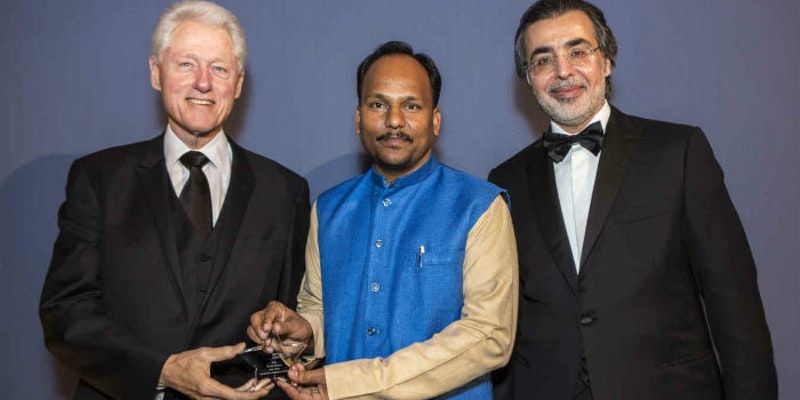Meet Asif Shaikh, who has rehabilitated 31,000 manual scavengers and bonded labourers across India
Asif's Jan Sahas Organisation has worked across 200 districts in 18 states, and has helped the rescued manual scavengers with financial support.
Despite the giant leaps India has taken with technological advancements and in various verticals, terms like manual scavenging are still in usage today. To address this issue and bring an end to manual scavenging operations in the country, the government has come forward in recent years.
In 2013, the practice was abolished through the Manual Scavenging Act, but since then there has been hardly any progress on the ground.
Individuals like Asif Shaikh, Founder of the Jan Sahas Organisation, are doing their bit to curb the practice. Over the past 16 years, the foundation has rehabilitated 31,000 manual scavengers and bonded labourers across 200 districts in 18 states. The foundation assists the rescued manual scavengers by providing financial support.

Asif Shaikh along with Bill Clinton receiving a souvenir for his work (Image: Jan Sahas India)
According to a study conducted by the International Dalit Solidarity Network, there are about 1.3 million manual scavengers in India, most of them being women. In a report in The Guardian, Asif said: “They were socialised to believe that they have to be low caste. They would tell us ‘this work has been given to us by God and we are at an advantage as we get food’. The reality was that they were being treated worse than animals”.
Asif has always held the firm belief that things needed to be changed. Having faced marginalisation himself in his childhood, Asif started a student community, the ‘Sahasi Ekta Group’, to work towards social development and societal problem-solving. Following this, in 2000, Asif founded Jan Sahas.
A year later, Asif initiated a campaign called the National Campaign for Dignity Programme to end forced labour. Under this banner, studies to identify forms of untouchability and discrimination towards the Dalit community were conducted.
Through the studies, he found that a large number of women were working as scavengers. Their plight of having to carry human faeces in a cane basket on their head in rain and scorching heat was not only unpleasant but also inhumane, Asif stressed.

Community Gathering in the village (Image: The Logical Indian)
According to The Logical Indian, the organisation started its work at Bhaurasa in Madhya Pradesh. Here, Asif convinced 26 women to give up their manual scavenging jobs. “The women burned their baskets as a symbol to boycott the ill practice”, The Logical Indian report quotes Asif. These women were offered alternative employment like tailoring to sustain themselves and their families.
The real success came in 2013 when the organisation covered 230 districts through their nation-wide march led by former manual scavengers. The group later roped in non-profit organisations to follow the same model and abolish manual scavenging.
Besides, they have also been successful with another initiative, the ‘barefoot paralegals’, through which 65 percent of the former victims of manual scavenging were trained to become advocates who would stand and get justice for others. Through their efforts, there has been a sharp increase in the rate of conviction in sexual crimes against Dalit women, from two percent to 38 percent in just a few years.
Asif says in The Logical Indian report, “Everybody needs to value the fundamental right to equality as depicted in the Indian Constitution.”
(Edited by Athirupa Geetha Manichandar)
Do you have an interesting story to share? Please write to us at [email protected].To stay updated with more positive news, please connect with us on Facebook and Twitter.












![[Exclusive] Vauld to seek 3-month moratorium extension as creditors panel explores bailout options](https://images.yourstory.com/cs/2/a09f22505c6411ea9c48a10bad99c62f/VauldStoryCover-01-1667408888809.jpg)
